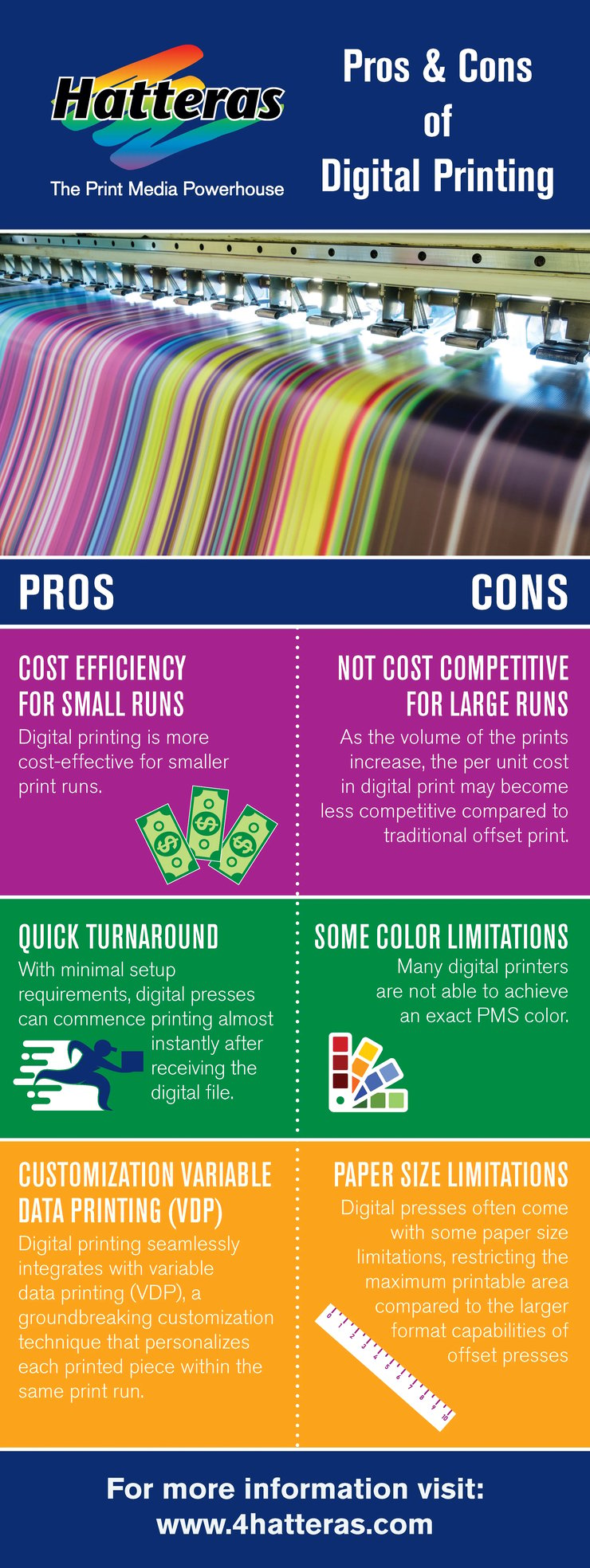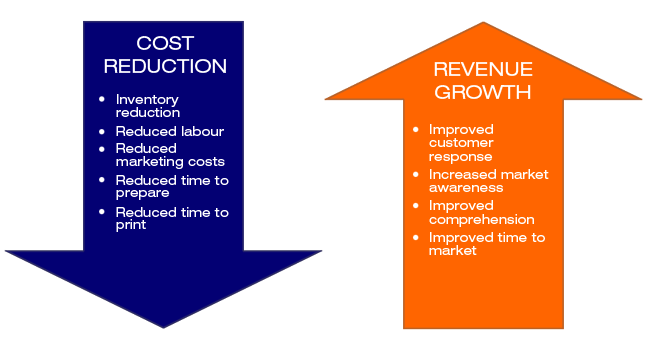The Buzz on Digital Printing
Digital Printing Things To Know Before You Get This
Table of ContentsThe Basic Principles Of Digital Printing Excitement About Digital PrintingDigital Printing - An OverviewThe Buzz on Digital PrintingThe smart Trick of Digital Printing That Nobody is Talking AboutOur Digital Printing PDFs
Variable data printing, such as straight mail with personalized codes and addresses, is ideally suited for electronic printing. Digital quick printing only needs four actions of design, review, printing and binding to get every little thing done. Digital quick printing has an unrivaled benefit: print on demand.According to PMMI, digital printing allows brand names and manufacturers to respond swiftly to customer needs while boosting the supply chain, decreasing warehousing cost and waste, and delighting in faster time to market. That all noises great, however exactly how does this modern technology do all that? The major differentiator of these modern technologies is that there are no set up costs and no plates with digital printing.
See This Report on Digital Printing
According to Wikipedia, the greatest distinction in between digital printing and typical approaches such as lithography, flexography, gravure, or letterpress - Digital Printing is that there is no demand to replace printing plates in digital printing, whereas in these analog printing methods home plates are repeatedly replaced. This leads to quicker turnaround time and decreases cost when using digital printing.
Speedy production indicates getting your item to market much faster. It likewise means it's easier and faster to make modifications in the future, when you transform a dish, include a SKU, or develop seasonal product packaging. Digital printing is highly adaptable, so it's very easy to make modifications to the package design quickly. It all goes back to home plates.
A lot more stock can suggest more waste in the future. With traditional printing approaches, short-run printing is just not possible. Because a fantastic design can make or break your product, digital printing continually creates top quality, clear and colorful graphics each time. Digital printing on versatile bags adds the intense, vibrant, and precise graphics that virtually beckon consumers to reach out and touch them.
Digital printing is the process of printing digital-based photos directly onto a range of media substrates. There is no demand for a printing plate, unlike with offset printing. Digital documents such as PDFs or desktop publishing data can be sent directly to the electronic printing machine to publish on paper, image paper, canvas, textile, synthetics, cardstock and various other substratums.
The Greatest Guide To Digital Printing
According to PMMI, digital printing enables brand names and suppliers to respond quickly to client demands while boosting the supply chain, decreasing warehousing expense and waste, and delighting in faster time to market. That all audios fantastic, but how does this innovation do all that? The significant differentiator of these technologies is that there are no set-up charges and no plates with digital printing.
This results in quicker turn-around time and reduces expense when making use of electronic printing.

Indicators on Digital Printing You Need To Know
With standard printing methods, short-run printing is just not feasible. Because an excellent design can make or break your product, electronic printing continually develops top notch, clear and colorful graphics each time.

According to PMMI, digital printing permits brands and producers to respond rapidly to client demands while improving the supply chain, lowering warehousing cost and waste, and taking pleasure in faster time to market. That all noises great, yet exactly how does this technology do all that? The major differentiator of these innovations is that there are no set-up costs and no plates with electronic printing.
Digital Printing - Questions
According to Wikipedia, the best distinction between digital printing and traditional approaches such as lithography, flexography, gravure, or letterpress is that there is no need to replace printing plates in electronic printing, whereas in these analog printing approaches home plates are consistently changed. This results in quicker turn-around go time and lowers expense when making use of electronic printing.
Digital printing is highly versatile, so it's easy to make changes to the plan layout rapidly. It all goes back to the plates.

Getting The Digital Printing To Work
Digital printing is the process of printing digital-based photos directly onto a range of media substratums. There is no need for a printing plate, unlike with offset printing. Digital files such as PDFs or desktop computer posting documents can be sent straight to the digital printing machine to publish theoretically, picture paper, canvas, material, synthetics, cardstock and various other substratums.